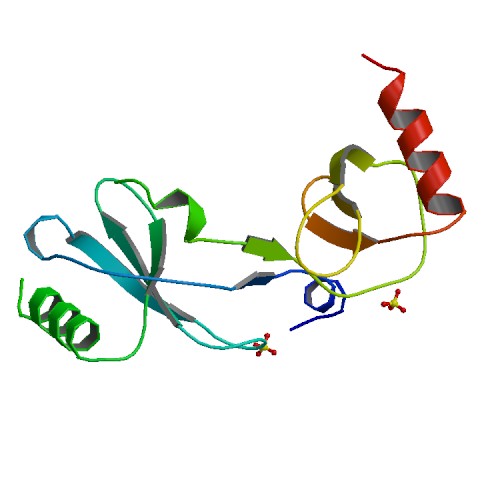CCL2
For the ICAO airport code see Candle Lake Airpark, for the diradical compound see Dichlorocarbene.
| Chemokine (C-C motif) ligand 2 | |||||||||||||
|---|---|---|---|---|---|---|---|---|---|---|---|---|---|
 PDB rendering based on 1dok. | |||||||||||||
| |||||||||||||
| Identifiers | |||||||||||||
| Symbols | CCL2 ; GDCF-2; GDCF-2 HC11; HC11; HSMCR30; MCAF; MCP-1; MCP1; MGC9434; SCYA2; SMC-CF | ||||||||||||
| External IDs | Template:OMIM5 Template:MGI HomoloGene: 2245 | ||||||||||||
| |||||||||||||
| RNA expression pattern | |||||||||||||
 | |||||||||||||
| More reference expression data | |||||||||||||
| Orthologs | |||||||||||||
| Template:GNF Ortholog box | |||||||||||||
| Species | Human | Mouse | |||||||||||
| Entrez | n/a | n/a | |||||||||||
| Ensembl | n/a | n/a | |||||||||||
| UniProt | n/a | n/a | |||||||||||
| RefSeq (mRNA) | n/a | n/a | |||||||||||
| RefSeq (protein) | n/a | n/a | |||||||||||
| Location (UCSC) | n/a | n/a | |||||||||||
| PubMed search | n/a | n/a | |||||||||||
Chemokine (C-C motif) ligand 2 (CCL2) is a small cytokine belonging to the CC chemokine family that is also known as monocyte chemotactic protein-1 (MCP-1). It is found at the site of tooth eruption and bone degradation. In the bone, CCL2 is expressed by mature osteoclasts and osteoblasts and is under the control of nuclear factor κB (NFκB). CCL2 recruits immune cells, such as monocytes, to sites of tissue injury and infection. This chemokine is produced as a protein precursor containing signal peptide of 23 amino acids and a mature peptide of 76 amino acids.[1][2] It is a monomeric polypeptide, with a molecular weight of approximately 13kDa. As with many other CC chemokines, CCL2 is located on chromosome 17 in humans.[3] The cell surface receptors that bind CCL2 are CCR2 and CCR5.
Function
CCL2 induces recruitment of monocytes, T lymphocytes, eosinophils, and basophils and is responsible for many inflammatory reactions to disease, and has been linked to recruitment of osteoclast precursors.
In human osteoclasts, it has been shown that CCL2 and RANTES (regulated on activation normal T cell expressed and secreted) are unregulated by RANKL (receptor activator of NFκB ligand). And that both MCP-1 and RANTES induced the formation of TRAP-positive, multinuclear cells from M-CSF-treated monocytes in the absence of RANKL, but produced osteoclasts that lacked cathepsin K expression and resorptive capacity. It is proposed that CCL2 and RANTES act as autocrine loop in human osteoclast differentiation.
References
- ↑ Yoshimura et al., Human monocyte chemoattractant protein-1 (MCP-1): full-length cDNA cloning, expression in mitogen-stimulated blood mononuclear leukocytes, and sequence similarity to mouse competence gene JE. FEBS Lett. 1989, 244: 487-493.
- ↑ Furutani et al., Cloning and sequencing of the cDNA for human monocyte chemotactic and activating factor (MCAF). Biochem. Biophys. Res. Commun. 159: 249-255, 1989.
- ↑ Mehrabian et al., Localization of monocyte chemotactic protein-1 gene (SCYA2) to human chromosome 17q11.2-q21.1. Genomics,1991, 9: 200-203.
Further reading
- Yoshimura T, Leonard EJ (1992). "Human monocyte chemoattractant protein-1 (MCP-1)". Adv. Exp. Med. Biol. 305: 47–56. PMID 1661560.
- Wahl SM, Greenwell-Wild T, Hale-Donze H; et al. (2000). "Permissive factors for HIV-1 infection of macrophages". J. Leukoc. Biol. 68 (3): 303–10. PMID 10985244.
- Sell H, Eckel J (2007). "Monocyte chemotactic protein-1 and its role in insulin resistance". Curr. Opin. Lipidol. 18 (3): 258–62. doi:10.1097/MOL.0b013e3281338546. PMID 17495598.
| This protein-related article is a stub. You can help Wikipedia by expanding it. |